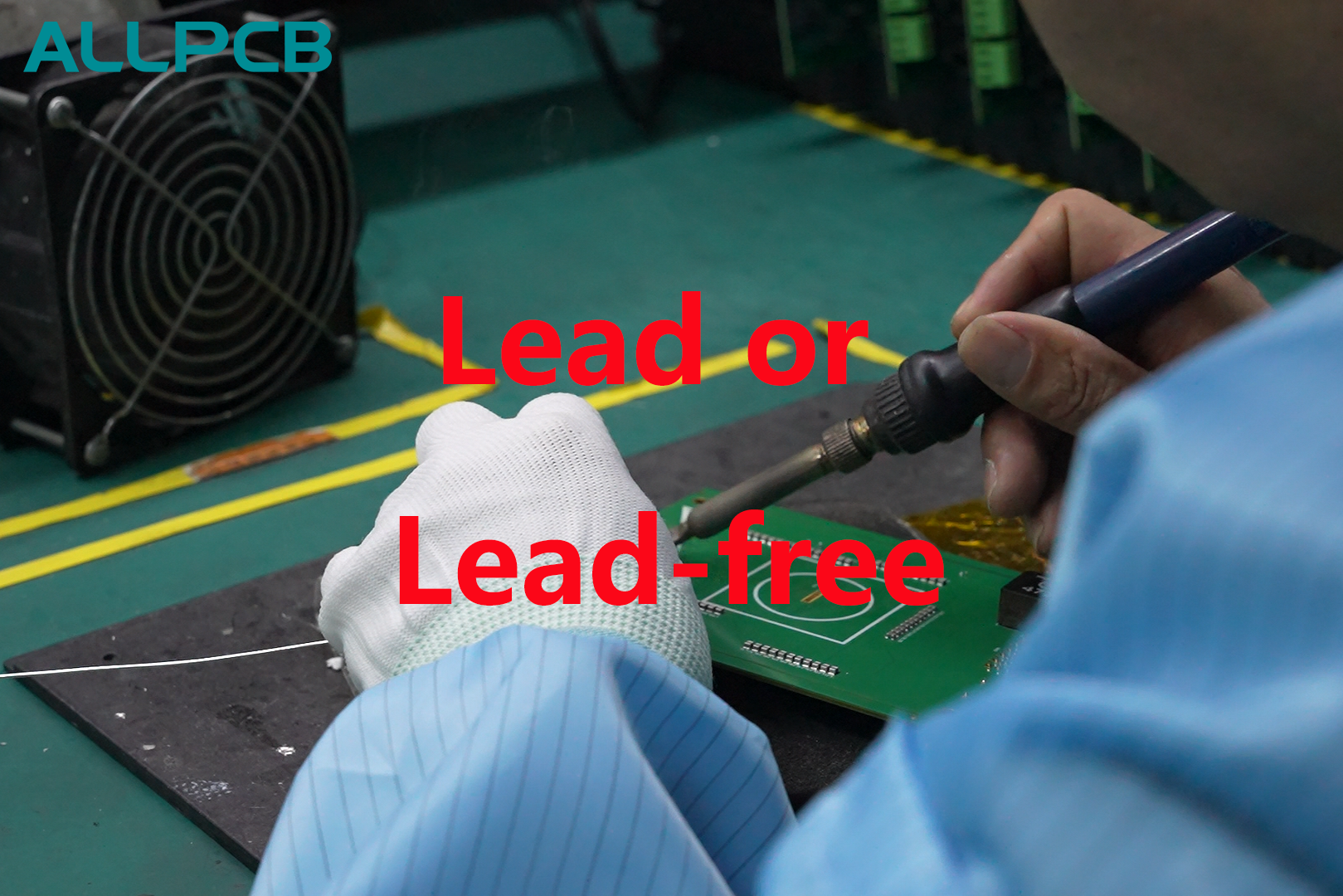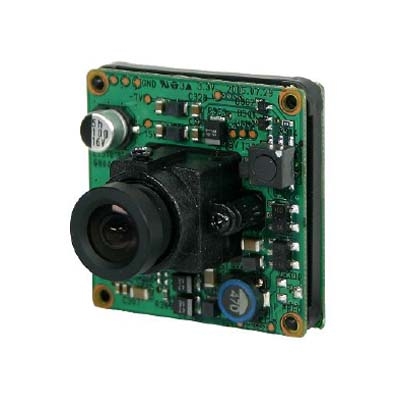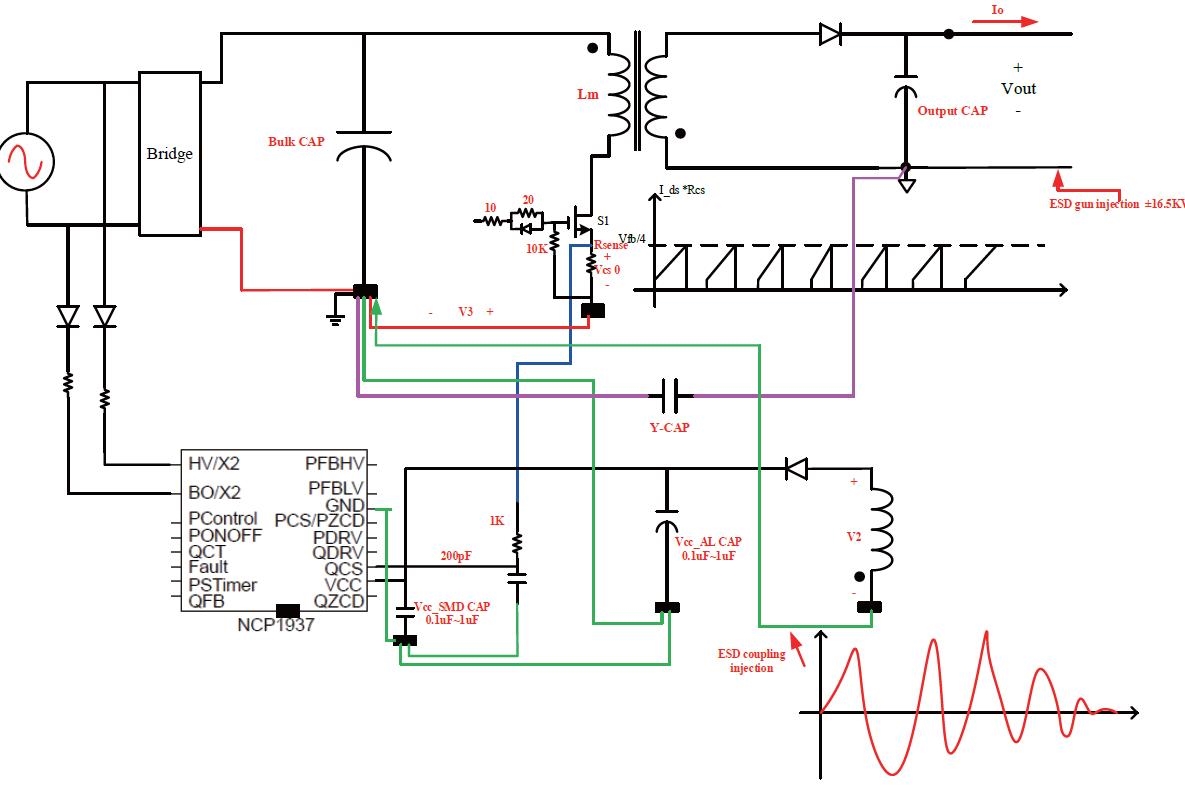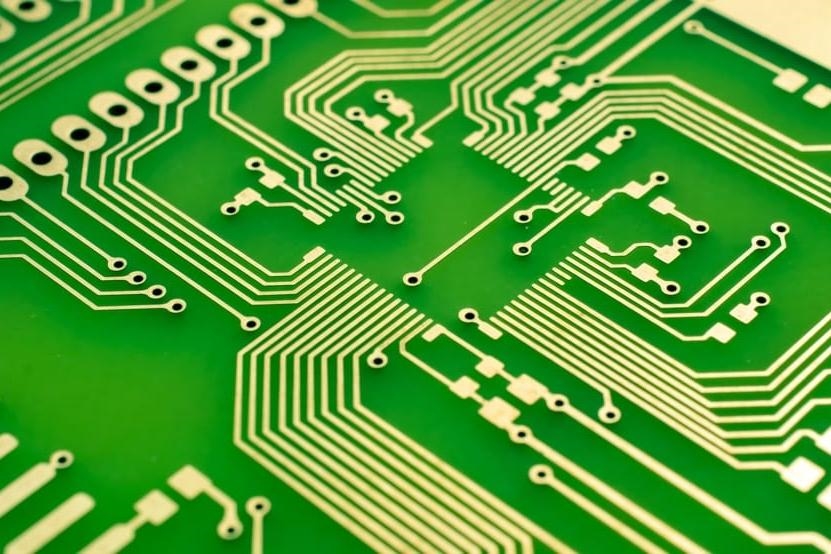Printed Circuit Boards (PCBs) are the backbone of modern electronics, powering everything from smartphones to industrial machinery. For engineers, ensuring every component aligns perfectly during assembly is critical to a PCB's performance. One often-overlooked yet essential part of this process is the "pinner." If you've ever wondered, "What is a pinner in PCB?" or "What is a pinner in PCB factory?"—you're in the right place. In this blog, we'll dive into the technical details, explore its significance, and break down how it fits into the broader PCB manufacturing landscape.
The pinner might sound like a small player, but its role can make or break the reliability of a circuit board. Whether you're designing a high-speed multilayer PCB or prototyping a simple single-layer board, understanding the pinner's function offers valuable insight into achieving precision and efficiency. Let's explore this key element step-by-step.
What is a Pinner in PCB?
A pinner in PCB refers to a specialized tool or mechanism used during the manufacturing process to align and secure components or layers before they're permanently fixed, typically through soldering. Think of it as a temporary "anchor" that holds everything in place, ensuring no movement or misalignment occurs during critical assembly stages. This is especially important in complex designs where even a 0.1 mm shift can lead to short circuits or signal interference.
In technical terms, a PCB pinner can take various forms—mechanical pins, clamps, or fixtures—depending on the PCB assembly method. For through-hole technology (THT), pinners insert component leads into pre-drilled holes with precision. For surface-mount technology (SMT), they stabilize tiny components on the board's surface during reflow soldering. The goal? Perfect alignment and stability, every time.
Why It Matters
Misaligned components can increase impedance beyond acceptable limits (e.g., exceeding 50 ohms in a controlled-impedance design), disrupt signal speeds (like 10 Gbps in high-speed applications), or cause outright failures. A pinner ensures consistency, reducing defect rates by up to 15% in high-volume production, according to industry benchmarks.
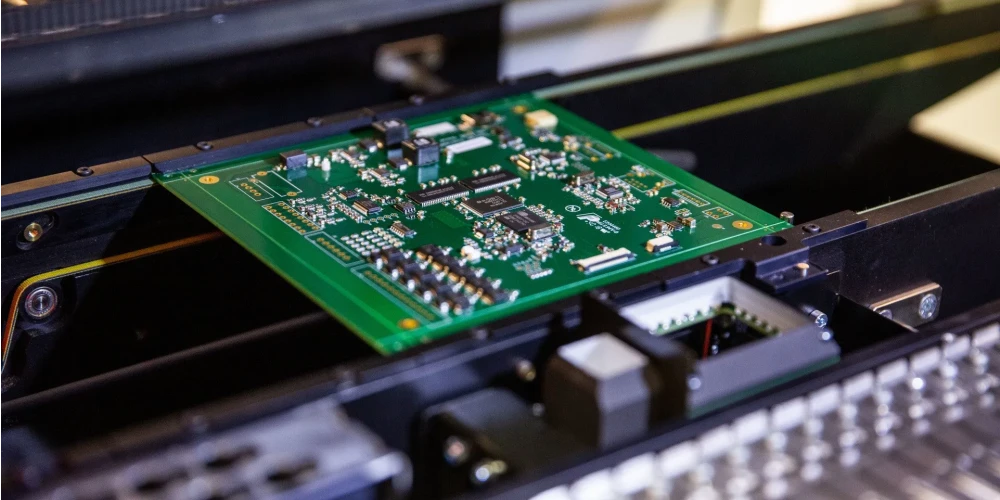
What is a Pinner in PCB Factory?
In a PCB factory, the term "pinner" takes on a broader meaning. It's not just a tool but often a dedicated machine or operator role focused on the pinning process. Here, the pinner ensures that every board—whether a single-layer prototype or a 20-layer high-density interconnect (HDI) design—meets exact specifications before moving to soldering or final assembly.
The Factory Workflow
Imagine a bustling production line: boards move from pick-and-place machines, where components are positioned, to soldering stations. Between these steps, the pinner steps in. Automated pinners, common in high-volume factories, use robotic arms to insert pins at speeds of up to 100 components per minute. Manual pinners, on the other hand, are still used for low-volume runs or intricate designs requiring human oversight.
Key Responsibilities
- Pin Insertion: Aligning and inserting pins into pre-drilled holes or securing SMT components.
- Stability Check: Ensuring no shifts occur during vibration or heat exposure (e.g., 260°C in reflow ovens).
- Quality Control: Spotting misalignments as small as 0.05 mm, which could lead to a 20% drop in signal integrity for high-frequency circuits.
In a factory setting, the pinner bridges the gap between placement and permanence, making it indispensable for scalable, reliable production.
Types of Pinners in PCB Manufacturing
Pinners aren't one-size-fits-all. Their design and function vary based on the PCB type and assembly technique. Here's a breakdown of the most common types:
1. Through-Hole Pinners
Used in THT assembly, these pinners insert metal pins or component leads into drilled holes. They're critical for components like resistors or connectors, where leads must align with conductive traces on both sides of the board. Precision here ensures electrical continuity, with tolerances often below 0.1 mm.
2. Surface-Mount Pinners
For SMT, pinners hold tiny components—like 0402 resistors (1.0 mm x 0.5 mm)—in place before reflow soldering. These often use vacuum clamps or micro-pins to stabilize parts on solder paste, preventing shifts during the 30-60 seconds of peak heat exposure.
3. High-Precision Pinners
In aerospace or medical applications, where failure isn't an option, high-precision pinners operate at micron-level accuracy (e.g., ±5 μm). They're vital for HDI PCBs with microvias as small as 0.1 mm in diameter.
4. Custom Pinners
Some designs require bespoke solutions. Custom pinners adapt to unique component shapes or board layouts, ensuring flexibility for specialized projects like flexible PCBs or rigid-flex hybrids.
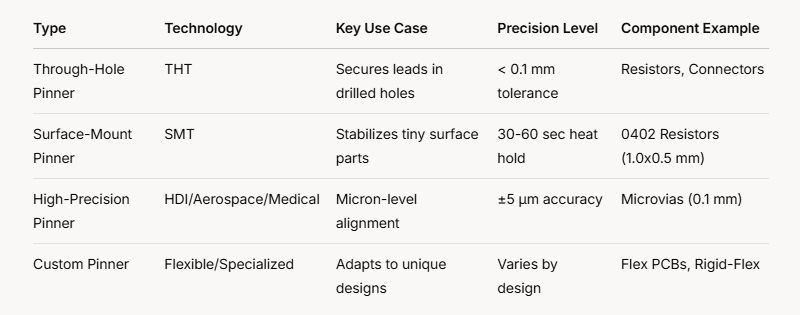
The Importance of Pinners in PCB Assembly
Why dedicate so much attention to a pinner? Because it directly impacts the quality, efficiency, and cost of PCB production. Let's explore its key benefits:
1. Precision and Accuracy
A pinner ensures components stay within design tolerances. For example, in a multilayer PCB, layer misalignment by 0.2 mm can increase capacitance by 10 pF, throwing off timing in a 5 GHz signal path. Pinners eliminate this risk.
2. Enhanced Stability
During soldering, boards face mechanical stress and heat. A pinner prevents components from shifting, reducing defects like tombstoning (where one end of an SMT component lifts), which can occur in 5-10% of poorly stabilized boards.
3. Improved Efficiency
Automated pinners speed up assembly, cutting production time by 20-30% in high-volume runs. This means faster prototyping and quicker market delivery—crucial for engineers racing against deadlines.
4. Cost Savings
Fewer defects mean less rework. Industry data suggests that proper pinning can reduce scrap rates from 8% to 2%, saving thousands in materials and labor for large batches.
Challenges and Limitations of Pinners
While pinners are game-changers, they're not without hurdles. Engineers should be aware of these potential drawbacks:
1. Component Compatibility
Not all components suit standard pinners. Oddly shaped parts or ultra-miniature chips (e.g., 0201 packages at 0.6 mm x 0.3 mm) may require custom fixtures, adding complexity.
2. Initial Investment
Automated pinners can cost $50,000-$100,000 upfront, a steep price for small-scale manufacturers. Maintenance and calibration add ongoing expenses.
3. Training Needs
Manual pinning demands skilled operators who can spot defects like a bent pin (reducing contact area by 50%) or misalignment. Training takes time and resources.
Despite these challenges, the benefits often outweigh the costs, especially for high-stakes or high-volume projects.
The Future of Pinners in PCB Manufacturing
As PCB designs evolve—think denser layouts, smaller components, and flexible substrates—so do pinners. Here's what's on the horizon:
1. Automation and AI
Smart pinners with real-time sensors could adjust pinning force (e.g., 1-5 N) based on component type, reducing errors by 25%. AI-driven quality checks might flag issues instantly, boosting yields.
2. Miniaturization Support
With components shrinking (e.g., 01005 chips at 0.4 mm x 0.2 mm), pinners will need sub-micron precision to keep pace, especially for 5G and IoT devices.
3. Integration with Cobots
Collaborative robots (cobots) could pair with pinners for hybrid assembly, blending human finesse with machine speed—ideal for small-batch, high-mix production.
How Pinners Fit into ALLPCB's Workflow
For engineers seeking reliable PCB solutions, precision tools like pinners are a cornerstone of success. At ALLPCB, we leverage advanced pinning technology to ensure every board meets stringent quality standards. Our quick-turn prototyping—delivering boards in as little as 24 hours—relies on automated pinners to maintain accuracy under tight deadlines. Coupled with global logistics and cutting-edge manufacturing, we help engineers bring designs to life, from concept to production, without compromising on reliability or speed.
Conclusion
So, what is a pinner in PCB? It's a vital tool that ensures alignment and stability during assembly, safeguarding the performance of your circuit board. And what is a pinner in PCB factory? It's the unsung hero of the production line, whether a machine or a skilled operator, driving efficiency and quality at scale. For engineers, understanding the pinner's role unlocks better design decisions and smoother manufacturing outcomes.
Next time you're troubleshooting a prototype or scaling up production, consider the pinner's impact. It's a small detail with a big payoff—precision you can count on.
 ALLPCB
ALLPCB


